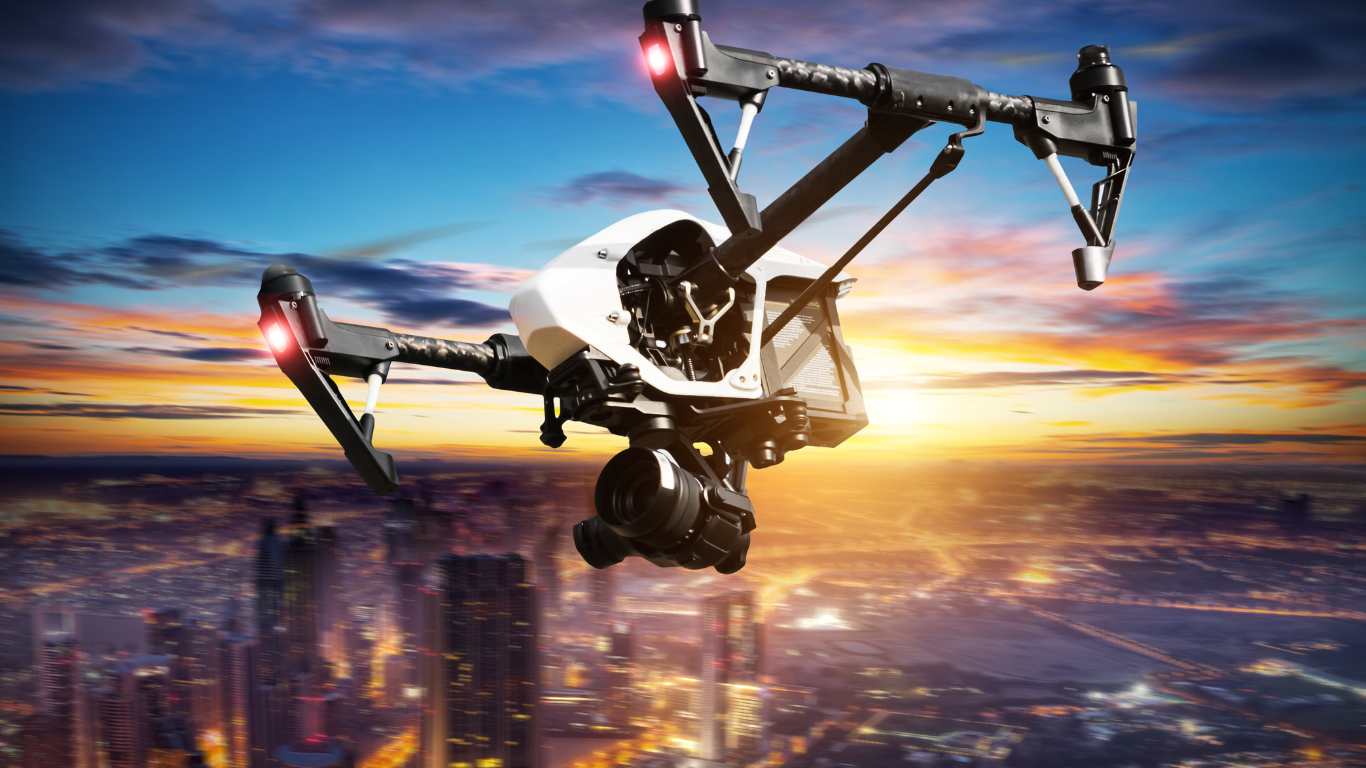Drones serve numerous practical purposes, but concerns about privacy invasion persist, especially when it comes to nighttime surveillance. Recognizing the signs of a drone’s presence after dark is crucial for maintaining security and peace of mind. Here’s a detailed guide on how to spot a drone at night, including various methods and technological aids.
Top Ways to Spot a Drone at Night?
1. Light Detection: Illuminate the Night
One of the most straightforward methods involves observing lights emitted by drones. While these lights may be subtle, paying close attention can reveal blinking or non-blinking patterns. Surveillance drones often feature bright anti-collision lights, making them more noticeable as they approach. Colors like green, white, and red are common but not exclusive.
2. Sound Awareness: Listen for Propeller Buzz
Even in the quietest environments, drones produce distinct sounds, mainly generated by their propellers. Heightened awareness of your surroundings can help you detect these buzzing noises, as soundwaves tend to travel downward at night. Drones are not stealthy when it comes to sound, ensuring you can hear them approaching.
3. Signal Detection: Utilizing Technology
1. Smartphone Applications: Modern Solutions
Leverage the power of smartphones by installing drone detector applications. These apps capture unencrypted Wi-Fi signals used by drones to communicate with their operators. By comparing the captured signals with a database, these applications confirm the presence of a drone and, in some cases, even identify the pilot’s location.
2. Motion Detection Cameras: Eyes in the Dark
For those with limited time to monitor lights or listen to sounds, motion detection cameras offer a technological advantage. Capable of detecting movement by analyzing image sequences, these cameras notify you of any intrusion. Place them strategically in locations with clear visibility and ensure they operate using infrared light for nighttime effectiveness.
3. Microwave Motion Sensors: Bouncing Waves
Microwave motion sensors work by emitting electromagnetic waves and detecting their reflections. Ideal for placement near windows, these sensors pick up intruding drones by analyzing the bounced-back waves. They may even provide insights into the drone’s speed and direction of motion.
4. Radar Detectors: Precision Monitoring
Among the most accurate methods, radar detectors analyze signals bouncing off drones within their transmission path. Capable of monitoring a broader space compared to microwave sensors, radar detectors can differentiate between birds and drones, offering detailed information about detected drone models.
5. Acoustic Sensors: Sounds in Silence
While expensive, acoustic sensors offer unique advantages. Detecting drones through sound they are effective even if the drone lacks communication signals. Acoustic sensors not only identify drones but also provide additional information about their models, minimizing the chances of false alarms.
4. Police Drones at Night: How to Distinguish
Now that you can spot drones, distinguishing a police drone from others is crucial. Police drones, often commercial rather than military, feature distinctive strobe lights with blue and red colors. Close proximity reveals separate colors, while at a distance, they may appear blended. Be cautious, as mimicking police drone features is discouraged, emphasizing the importance of responsible drone operation.
Conclusion:
In conclusion, a combination of human awareness and technological advancements provides a robust defense against nighttime drone concerns. By staying informed and employing the available tools, individuals can assert control over their privacy and security, fostering a sense of confidence in the face of evolving technological landscapes.
FAQs:
How can I spot a drone at night without any special equipment?
A1: You can rely on your basic senses. Look out for lights emitted by drones, listen for buzzing sounds from their propellers, and pay attention to any unusual movements in the night sky.
Do all drones emit lights at night?
A2: Most drones emit lights, although they may be subtle. Some have blinking and non-blinking lights, with common colors being green, white, and red. Surveillance drones often feature bright anti-collision lights.
Can I use my smartphone to detect drones at night?
A3: Yes, you can. Install drone detector applications on your smartphone. These apps capture unencrypted Wi-Fi signals used by drones and compare them with a database to confirm the presence of a drone.
How effective are motion detection cameras in spotting drones at night?
A4: Motion detection cameras can be highly effective, especially when strategically placed. They detect movement by analyzing image sequences and can notify you of any intrusion. Ensure they operate using infrared light for nighttime visibility.
What’s the difference between microwave motion sensors and radar detectors?
A5: Microwave motion sensors emit electromagnetic waves and detect their reflections to identify intruding drones. Radar detectors, on the other hand, analyze signals bouncing off drones within their transmission path, offering more extensive monitoring capabilities.
Can acoustic sensors detect drones without communication signals?
A6: Yes, acoustic sensors can detect drones even if they lack communication signals. They identify drones through sound, including the distinctive noise generated by propellers. Acoustic sensors can also provide information about the drone’s model.
How can I distinguish a police drone from other drones at night?
A7: Police drones often have strobe lights with blue and red colors. At close proximity, these lights appear separately on different sides of the drone. At a distance, they may seem blended but distinguishable. Avoid mimicking police drone features for responsible drone operation.
Can I fly my drone at night with blue and red lights for fun?
A8: It’s not advisable to mimic police drone features unless you are a police officer. While you may not face legal consequences, it can create confusion, making it challenging for people to differentiate between police drones and other commercial drones. Flying your drone at night is permissible for hobbyists or with proper waivers for commercial drone operators.
